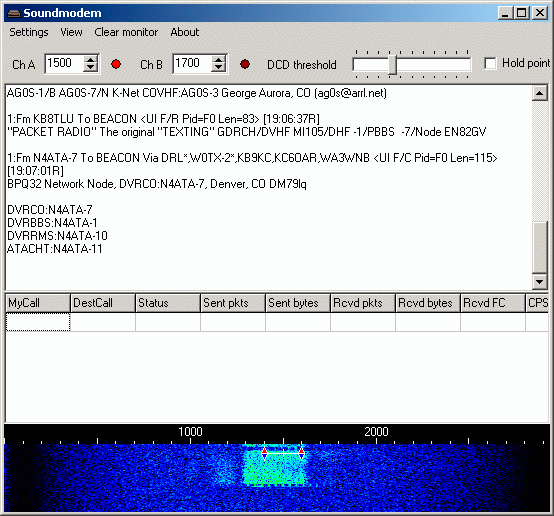UZ7HO Sound Modem: Giving New Life To A "Dinosaur"
Sholto Fisher, K7TMGArticle from the West Mountain Radio Spring 2013 Newsletter
This article is not really about Dinosaurs but it is about HF Packet-Radio which has been described by some as a "Dinosaur" digital mode. Far from being buried in the late Jurassic period HF Packet-Radio is prospering I'm happy to report. I should know as I have been involved with this form of communication for many years. The network I belong to has been in continuous operation since 1986 and has actually increased in size over the last two years as new technologies become available.
Back in its heyday, HF Packet-Radio was almost entirely done with a TNC (Terminal Node Controller). Typically they were a single ported or if you could afford one, a dual ported modem which would operate 300 baud on the HF port and 1200 baud on the VHF port. These modems were expensive but at the time were the only way to connect to, and become part of, a Packet-Radio network.
When PSK31 was first implemented on a computer sound card, perhaps around 1998 or so, it started a revolution in Amateur digital mode operating. No longer was it necessary to have a dedicated hardware box - you could just use what you already had - your computer sound card. From that time we got a plethora of new digital modes as people pushed the envelope on what was possible. Many people formerly involved with HF Packet-Radio got interested in these new modes and we saw activity drop on the network dramatically.
Until recently, HF Packet-Radio had been more or less overlooked by the sound card developers. We did get the AGWPE software, and full credit to SV1AGW for making a free version available, but while it worked very well for VHF Packet-Radio it was never a stellar performer with 300 baud HF packet. There was also the "Soundmodem" software written by HB9JNX but this was really intended for Linux platforms. It wasn't easy to use on a Windows computer.
Fairly recently, UZ7HO released his "Sound Modem" program for Windows. He made it AGW compatible (i.e., it communicates with other software on tcp/ip port 8000) and it was optimized for HF 300 baud packet. It also includes a "frame collector". This is a method of adding multiple decoders all slightly offset in frequency that act together. The result is, even a mis-tuned packet signal will get correctly decoded. Compared to traditional TNCs' or the AGW software it is light-years ahead in performance and rivals the best of the expensive dedicated modems produced by a well-known German company.
 UZ7HO Sound Modem In Operation
UZ7HO Sound Modem In Operation
The screen capture shown is UZ7HO sound modem running on 14101.8 MHz (USB) with a RIGblaster Advantage. It is decoding packets from "Network 105". This network is built upon many stations around the country and abroad. Everyone is welcome to join in and give it a try. It is primarily a chatting and personal mail network.
The UZ7HO software gives you the ability to decode and transmit raw packets - to actually communicate with someone on the network you also need to be running a terminal program which interfaces to UZ7HO. A good example of this would be the free Paxon software.
Coupled with UZ7HO Sound Modem, Paxon will allow you to connect to nodes, mailboxes, send a CQ and to chat with others on the network.
Why don't you try this old "Dinosaur" mode and see how far things have come since the 1980s?
Resources:
UZ7HO Sound Modem
http://uz7ho.org.ua/packetradio.htm
Paxon KISS Terminal
http://www.paxon.de/download.html
Network 105
http://groups.yahoo.com/group/network105
Categories that this topic belongs to: More for Hams


